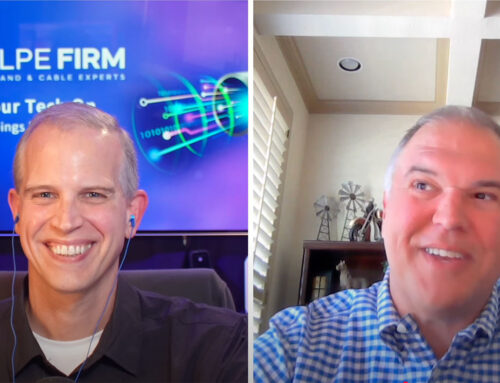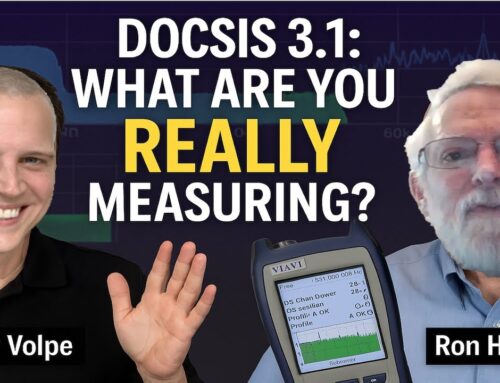Podcast: Play in new window | Download | Embed
Subscribe: Spotify | Email | RSS | More
In this episode Brady Volpe of Nimble This and The Volpe Firm, discusses PTP clocks with subject matter experts Jim Olsen from Microchip and Rob Jodrie from Syncworks. This discussion includes a very high level break down of PTP profiles and why you should care? The evolution of PTP, Boundary clocks, best practices and things to look out for. You may think this is not a big topic but this is something that impacts all operators big, medium or small when deploying distributed access architecture (DAA) such as R-PHY nodes, 5G technology and other related technologies requiring precise timing.
The discussion is on all things DOCSIS. Tips, suggestions and recommendations. Another power hour of cable.
PTP Clocks:
- Intro
- Why do we need PTP? – High accuracy needed for R-PHY
- What is PTP? – The Precision Time Protocol (PTP) is a protocol used to synchronize clocks throughout a computer network. On a local area network, it achieves clock accuracy in the sub-microsecond range, making it suitable for measurement and control systems.
- What does it do in our network?
- NTP – is a best effort and PTP – is engineered and guaranteed
- The older and more well-known protocol is the Network Time Protocol (NTP). The newer protocol is the Precision Time Protocol (PTP).
- Modulation on CMTSs mCMTS
- What happens when we lose PTP timing into the CMTS? Master clocks connected to a GPS. GPS is used for traceability
- CableLabs found PTP technology for CMTSs accuracy, especially needed for DAA and RPD applications
- Redundancy very important for reliability and to prevent outages
- What happens when you disconnect the PTP timer from a CMTS?
- Next steps in PTP timers
- 5G – Boundary clock function – full on path support for PTP extension of PTP version 2
- Network asymmetry
- Grandmaster function and client
- Asymmetry – the typical scenario
- Different classes of Boundary clocks
- CCAP can support both traditional and RPDs, what do PTP timers do in integration?
- Flexible mac architecture
- Remote Mac-PHY
- Video remote mac-phy
- video sync mode
- video asynchronous mode
- What do you do if adding 5G?
- Do we need PTP on the Remote Mac PHY
- PTP timing at the Mac-PHY needed?
- Remote MAC-PHY doesn’t need PTP but…
- Looking to the future GPS needed
- PTP services out of a CMTS
- Mobility Services
- Fixed wireless
- Low latency
- Sync evolution / GNS Vulnerability / Jamming
- Best practices
- Starlink? Could it replace GPS?
- GPS paid for by tax payers
- LEO – questionable
- Alternative to GPS? Satellite services get timing from GPS
- Satellite service are subscription
- Cesium clock
- Shows how important clocks are in the network
- Antenna alarm
- Any other things we should look out for?
- Design considerations
- Cable delay setting from antenna from receiver, cable type, how far away the antenna is from receiver
- Synchronous Ethernet and boundary clock functions go hand in hand
- Thanks to the Chat room!
End Podcast
Thank you for your time today. This was a great episode. Our next Episode 79 in November
- You can watch us live or recorded on Youtube or listen to us on your favorite podcaster. Links to everything is on the volpefirm.com webpage.
- If you have enjoyed this webcast, please do hit the subscribe button so that you never miss an episode.
- Thank you so much for being here and we will see you next month.
Upcoming events can be seen under Broadband Events. Previous events can be seen under the blog.
- If you are watching this on youtube please hit the subscribe button!
- Let us know what you think and remember to share!
- You can find slides at the bottom of the page and some on slideshare.
- Find out about events or articles by following us on Twitter, LinkedIn or Facebook too.
Also available on iTunes, Google Podcasts, Spotify, vurbl see podcasts “get your tech on”.




Leave a Reply